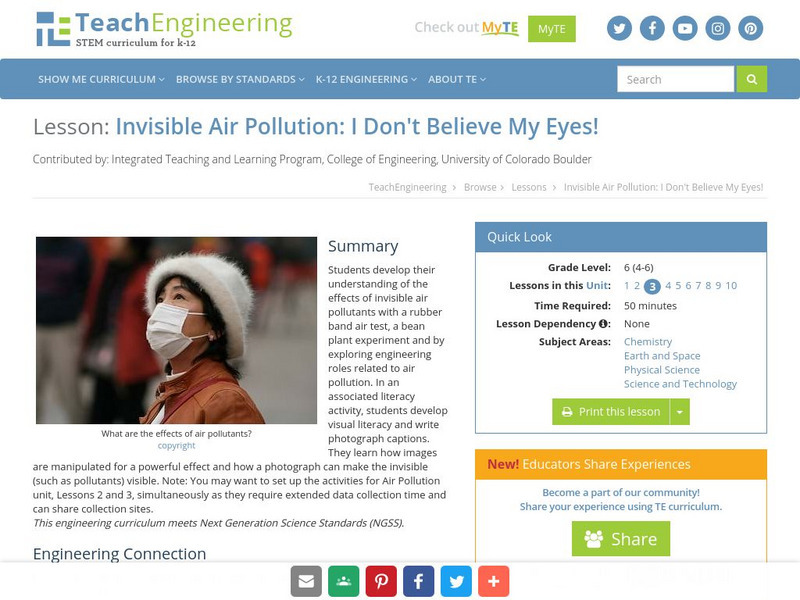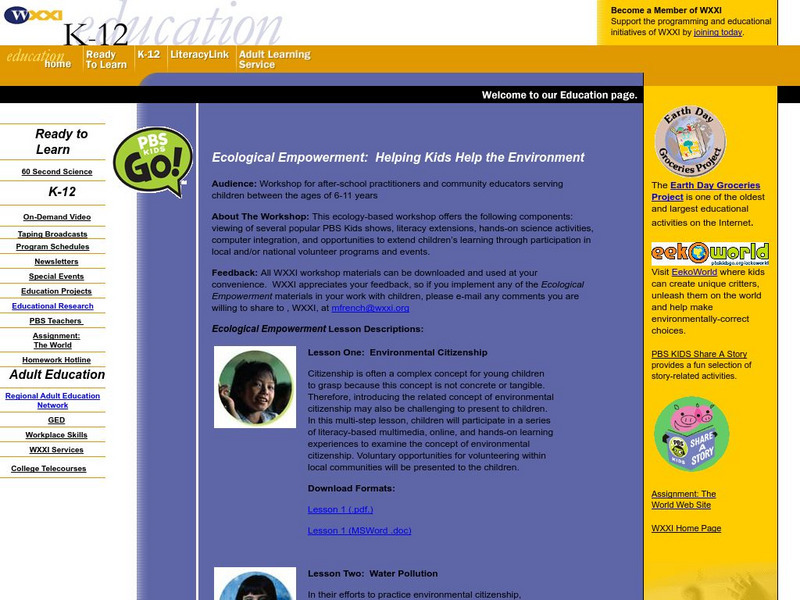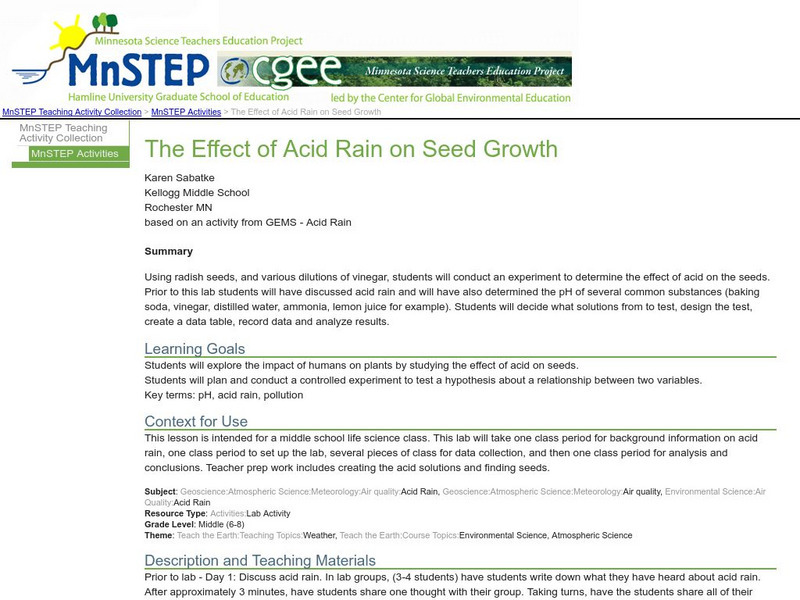TeachEngineering
Teach Engineering: What's Air Got to Do With It?
Students are introduced to the concepts of air pollution and air quality. The three lesson parts focus on the prerequisites for understanding air pollution. First, students use M&Ms to create a pie graph that expresses their...
Michigan Reach Out
Reach Out Michigan: Let's Catch Some Dirt From the Air
This site provides an experiment for early elementary students to discover different dirt particles in the air, and explore causes of air pollution.
TeachEngineering
Teach Engineering: I Don't Believe My Eyes!
Students develop their understanding of the effects of invisible air pollutants with a rubber band air test, a bean plant experiment and by exploring engineering roles related to air pollution. In an associated literacy activity,...
PBS
Pbs Teachers: Helping Kids Help the Environment
Define and explore the concept of environmental citizenship through a series of literacy-based multimedia, online and hands-on learning experiences. Discover how responsible citizens can help protect their local communities by...
University Corporation for Atmospheric Research
Ucar: Ozone in Our Neighborhood
Students will experiment to understand variations in the amount of ground-level ozone between different places in their neighborhood, town, or city.
TeachEngineering
Teach Engineering: Not So Neutral Views
Students are introduced to acids and bases, and the environmental problem of acid rain. They explore ways to use indicators to distinguish between acids and bases. Students also conduct a simple experiment to model and discuss the...
Science Education Resource Center at Carleton College
Serc: Mn Step: The Effect of Acid Rain on Seed Growth
A lab activity that takes place over a few weeks, where students first determine the pH of different solutions, then choose three that are acidic. They set up petri dishes with radish seeds and hydrate them with the different solutions...






